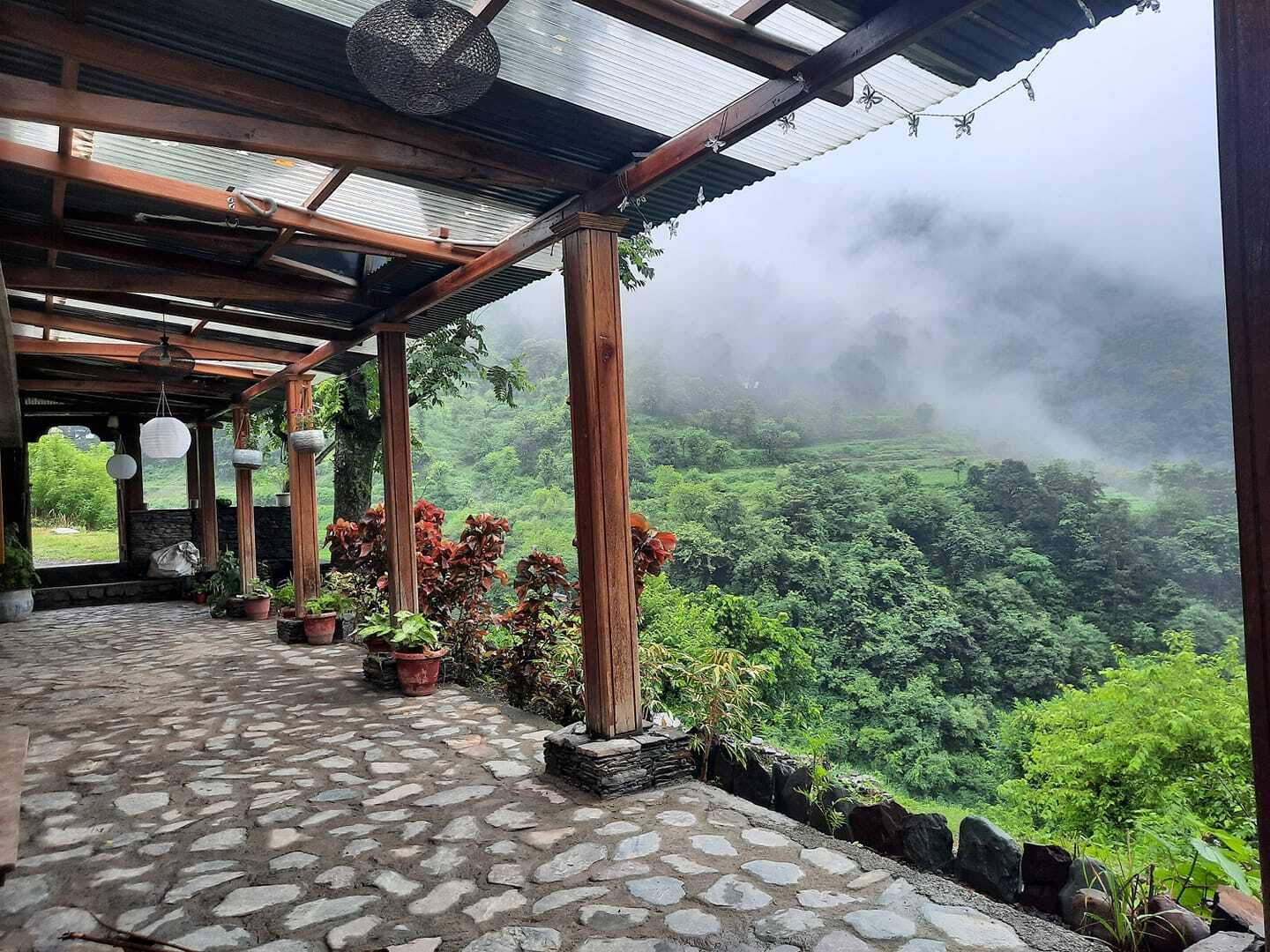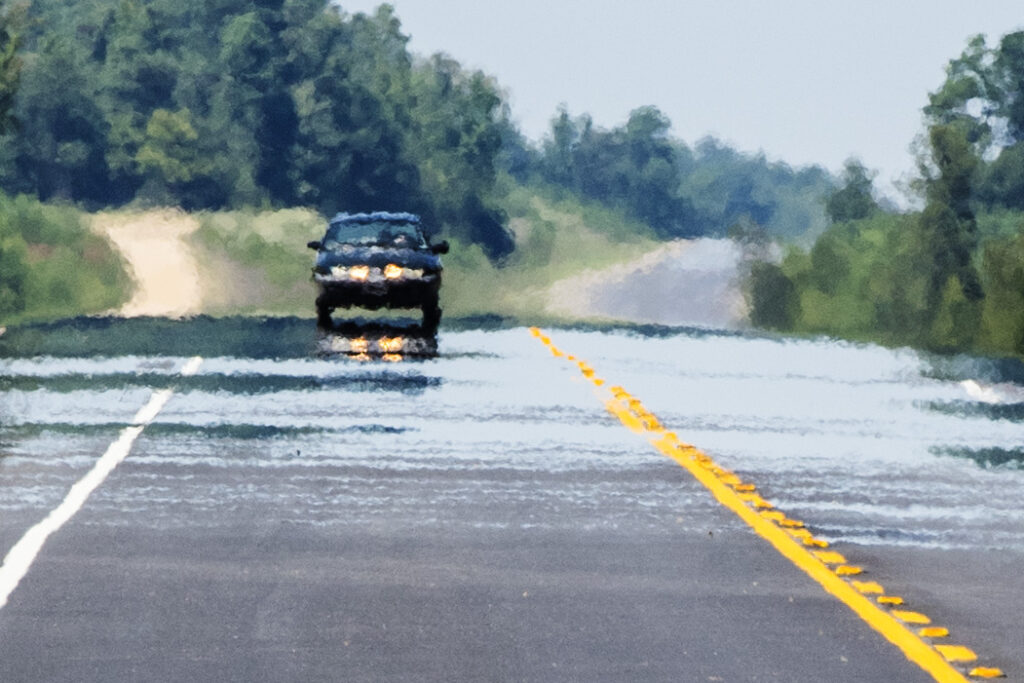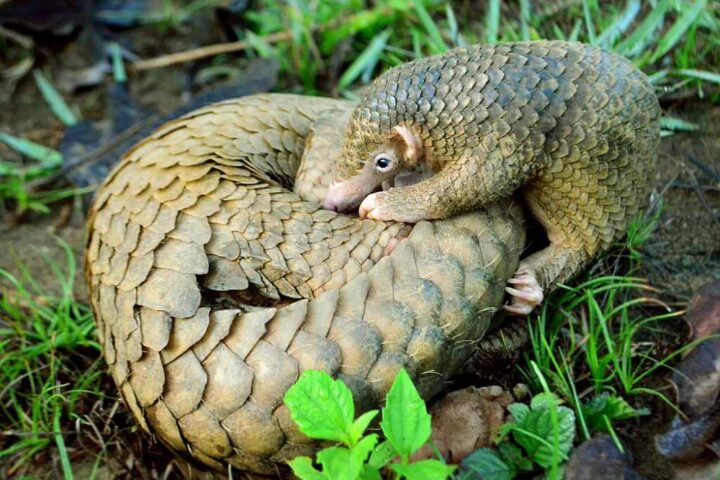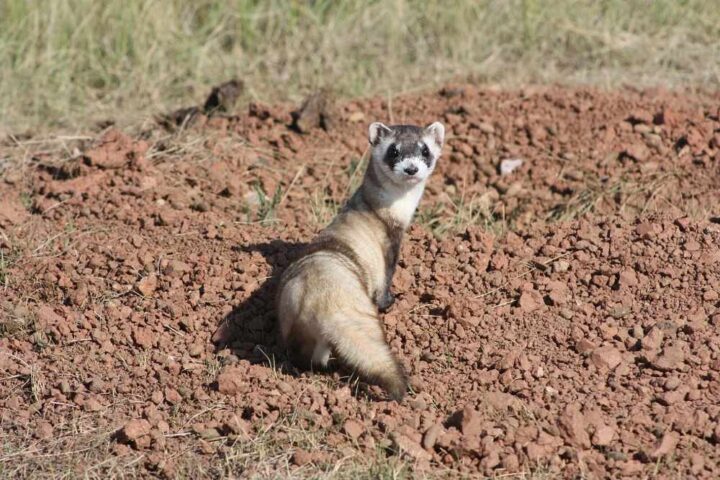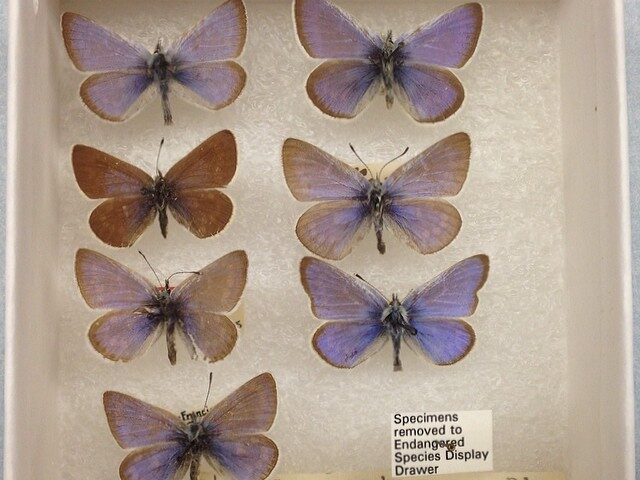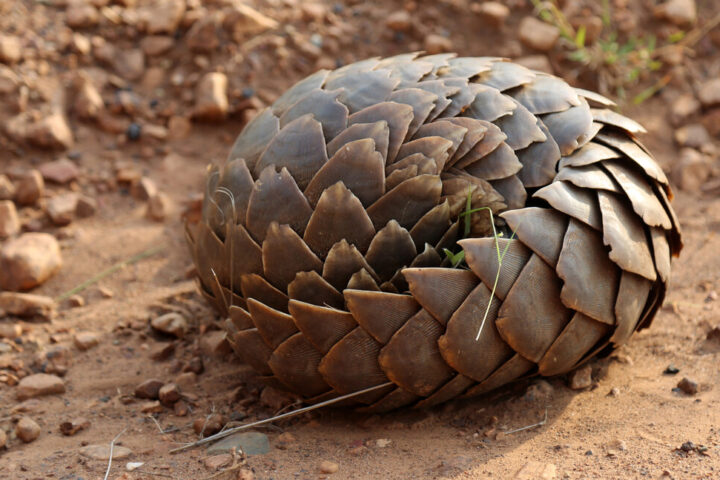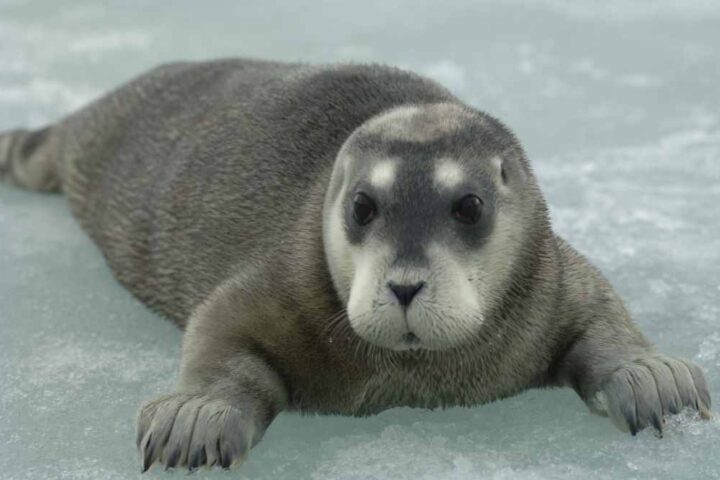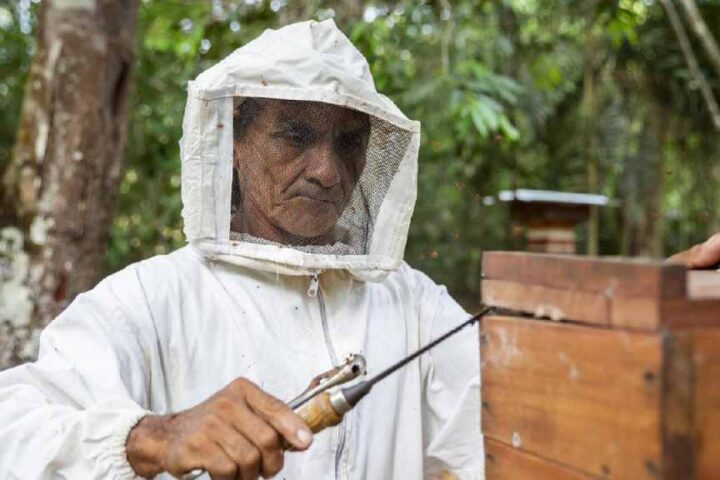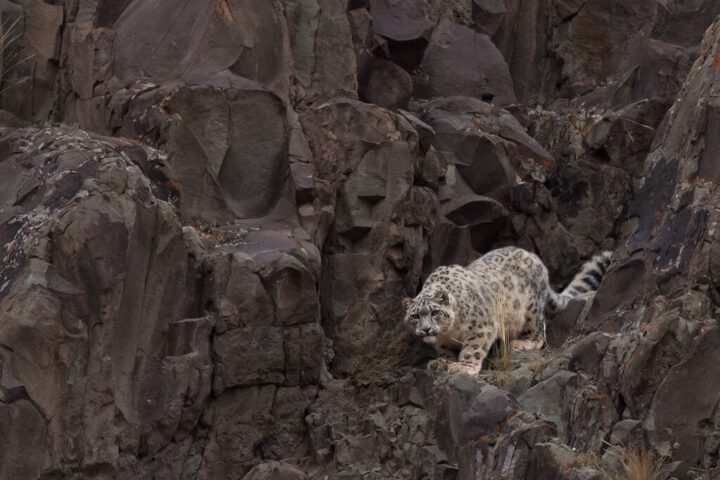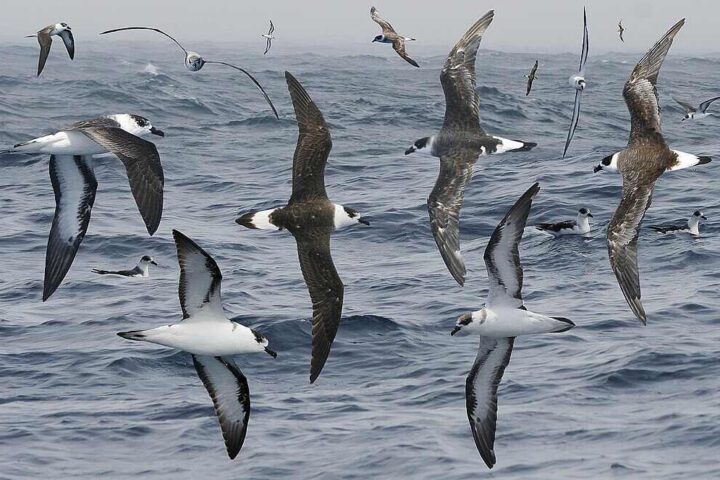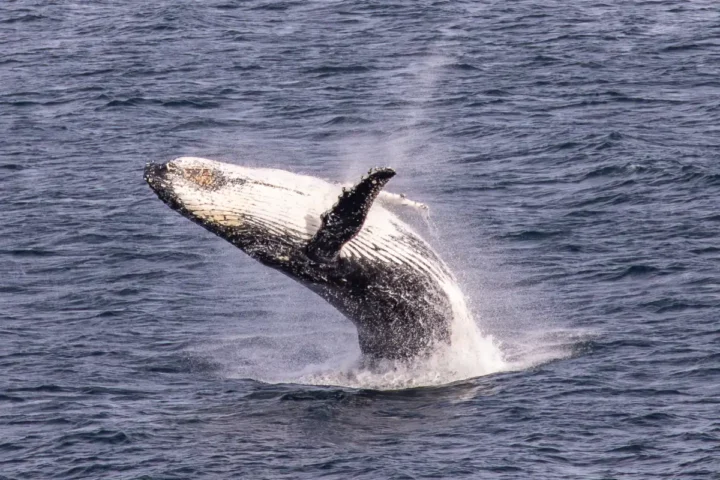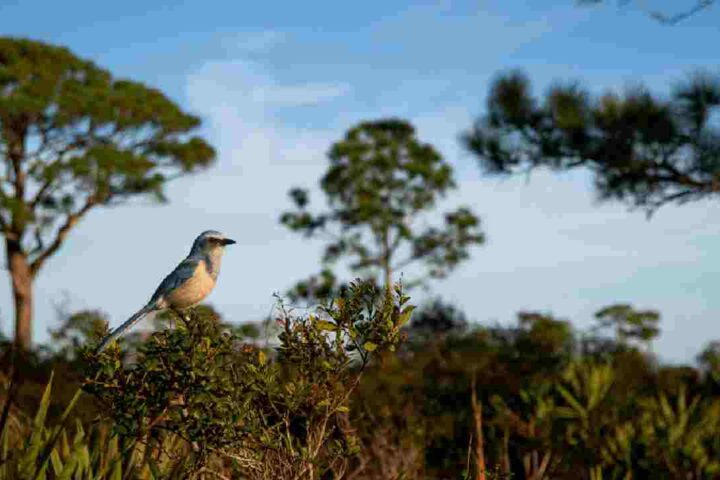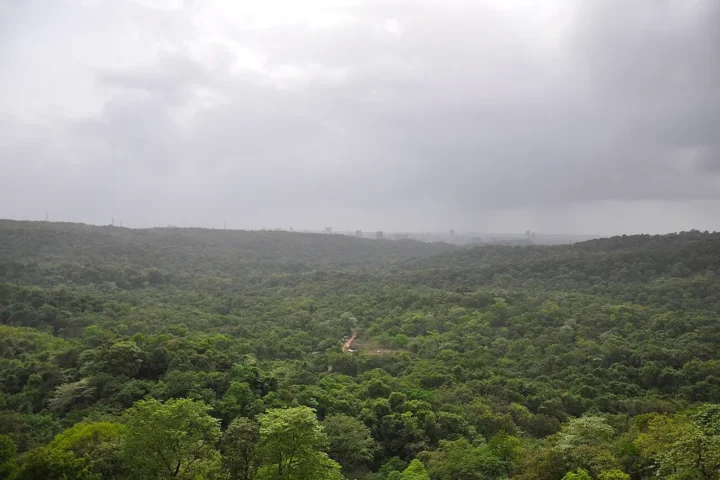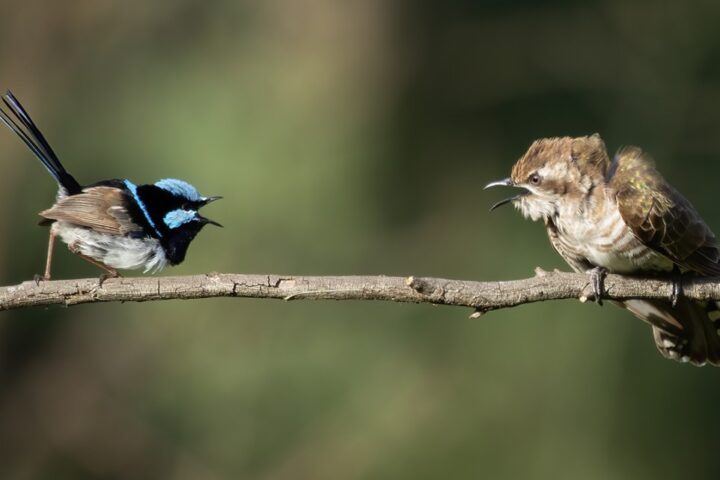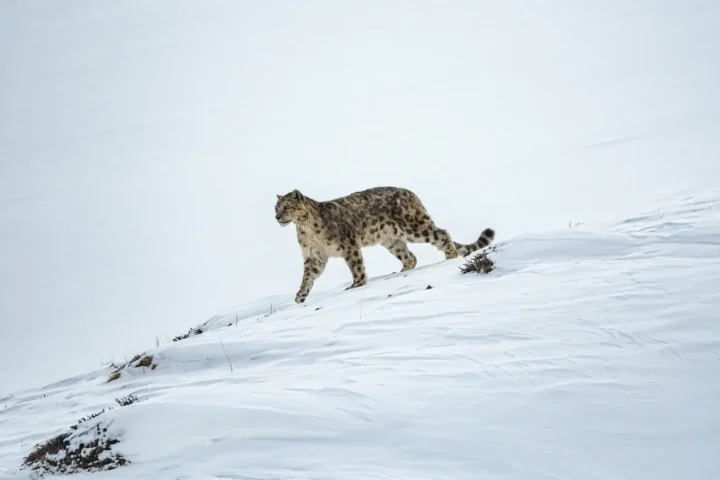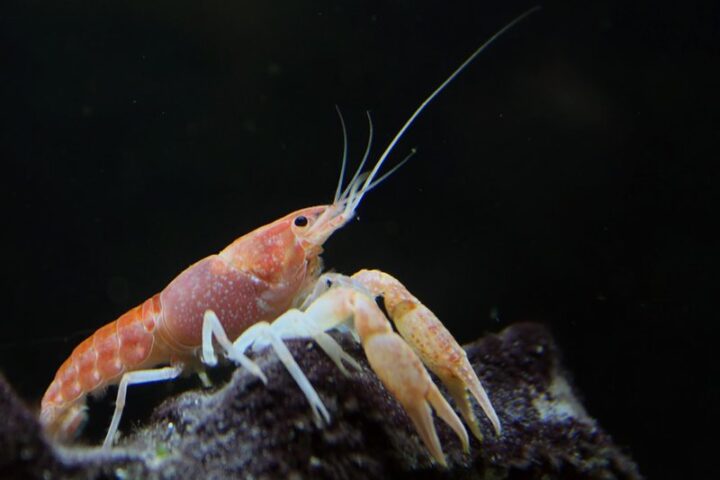In a climate-crisis-ridden country like India, public initiative is not enough to reference this land. So private and collective biospheres are coming up. It is a heartening sign to see afforestation as a tool to help nature thrive.
For example, Delhi-based environmentalist Jai Dhar Gupta led a citizen-driven movement called My Right to Breathe against Delhi’s worsening AQI (Air Quality Index) levels some years ago. He went on to launch an air purifier company and then decided to dream bigger. He bought a large swathe of land that was a three-hour drive from Delhi in 2022. “When I first met the local Pradhan, they could not understand why someone would buy land and not use it for commercial benefit. They called me the mad man from the city,” says Gupta. Through rewilding efforts, the once flat land is now furrowed and full of wild grass to help soak up rainwater and channel it into the river. Gupta now plans to invite ecologists to help introduce butterflies, bees, and fungi into the forest. Only electric vehicles are allowed there to keep fossil fuel emissions at bay.
Similar Posts
About 150 kms from Pune, in the lap of the Sahyadri mountains, is the Konya valley – full of ‘Malik forests’, the local parlance for jungles on private land. A retired forest officer Jayant Kulkarni has helped rewind 600 acres of these private patches of green since 2015. Kulkarni is executive director of Wildlife Research and Conservation Society (WRCS), a non-profit NGO with dedicated teams that worked closely with farmers for three consecutive years to teach them how to plant trees that are ecologically suited to the region.
One of the earliest DIY (Do It Yourself) forests was in Karnataka. Bengaluru-based entrepreneur Suresh Kumar bought a 21-acre piece of barren land in the Sagar region over a decade ago. It is now a dense forest named Usha Kiran, which environmentalist Akhilesh Chipiha helped create. Karnataka also has the country’s first private wildlife sanctuary in Kodaganallur, which was started by the late Anil Kumar Malhotra and his wife Pamela Gale in 1991. It is today a home for 105 species of birds, 50 kinds of snakes, 102 species of butterflies, and 46 varieties of native trees.
A dense forest just 95 km from the busy metro of Mumbai? A group of more than twenty environmental lovers are credited with helping to create Vanvadi in 1994. This private forest serves as a tribute to their vision and commitment and is now acknowledged as an effective illustration of low-cost, community-driven conservation. It has now over 80,000 trees, which is 90% tree cover.
Here are some of the private biospheres:
- Rajaji Raghati Biosphere (32 acres) Location: Beside Rajaji Tiger Reserve, Uttarakhand Led by: Delhi-based environmentalist Jai Dhar Gupta.
- Vanvadi (65 acres) Location: 95 km from Mumbai Led by A citizen collective founded by Bharat Mansata.
- Usha Kiran (21 acres) Location: Sagar region in Karnataka Led by: Bengaluru-based entrepreneur Suresh Kumar.
- Konya River Valley Project (600 acres) Location: Sahyadris, near Pune Led by: Jayant Kulkarni, executive director, WRCS.
Such hundreds of initiatives are required to regreen India.
